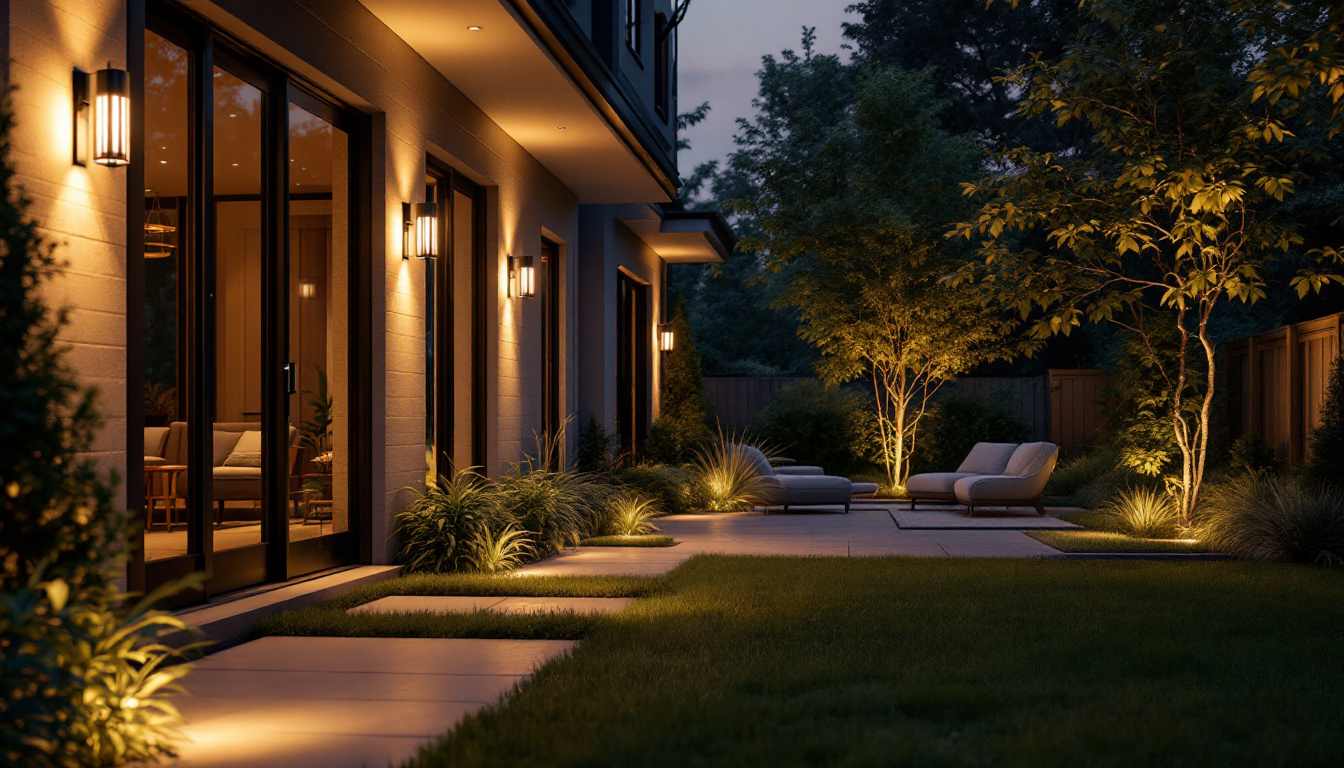
outdoor lighting has evolved significantly over the years, with advancements in technology leading to the integration of sensors in lighting systems. For lighting contractors, understanding how to effectively utilize outside lights with sensors can enhance both the functionality and aesthetic appeal of outdoor spaces. This article provides quick tips for lighting contractors looking to incorporate sensor technology into their projects.
Before diving into installation techniques, it’s essential to understand the different types of sensors available for outdoor lighting. Each type serves a unique purpose and can be selected based on the specific needs of a project.
Motion sensors are designed to detect movement within a specified range. These sensors are ideal for security lighting, as they can illuminate areas when someone approaches, deterring potential intruders. When selecting motion sensors, consider the detection range and angle, as these factors can significantly impact their effectiveness.
For optimal performance, install motion sensors at a height that allows for maximum coverage. Typically, a height of 8 to 10 feet is recommended. Additionally, ensure that the sensor is not obstructed by foliage or other structures that could hinder its ability to detect movement.
Photocells, or light sensors, automatically turn lights on or off based on ambient light levels. These sensors are particularly useful for outdoor lighting that needs to operate at specific times of day. For instance, they can be programmed to turn on at dusk and off at dawn, providing convenience and energy savings.
When installing photocells, consider the location carefully. They should be placed in an area where they can accurately gauge the surrounding light levels, avoiding any obstructions that could interfere with their functionality. Additionally, ensure that the photocell is not exposed to artificial light sources, as this may cause it to malfunction.
Timers offer another level of control for outdoor lighting systems. They can be programmed to turn lights on and off at predetermined times, making them suitable for both security and aesthetic purposes. Timers are especially beneficial for landscape lighting, allowing homeowners to showcase their gardens during the evening hours.
When choosing a timer, consider the ease of programming and the range of settings available. Some timers even offer smart features, allowing for remote control via smartphone apps. This can be an attractive selling point for clients looking for modern solutions.
Proper installation is crucial for ensuring that outdoor lights with sensors function effectively. Here are some best practices that lighting contractors should follow.
Before installation begins, take the time to plan the layout of the lighting system. Consider the purpose of the lights, whether for security, ambiance, or both. This planning phase should include determining the optimal locations for lights and sensors, ensuring maximum coverage and effectiveness.
Utilize a combination of different lighting types, such as path lights, floodlights, and accent lights, to create a well-rounded outdoor lighting scheme. This approach not only enhances safety but also adds visual interest to the landscape.
When installing outdoor lights, proper wiring is essential. Ensure that all wiring is rated for outdoor use and is buried at a safe depth to prevent damage from weather and landscaping. Use weatherproof connectors and junction boxes to protect electrical connections from moisture and debris.
Additionally, consider using low-voltage lighting systems, which are safer and easier to install than traditional high-voltage systems. Low-voltage systems also allow for greater flexibility in design and can be powered by solar energy, further enhancing sustainability.
After installation, testing the system is a critical step. Activate the sensors and observe their performance to ensure they respond correctly to movement and light levels. Adjust the sensitivity settings as necessary to prevent false triggers or missed activations.
Take the time to walk through the area after dark to evaluate the lighting’s effectiveness. This will help identify any areas that may require additional lighting or adjustments to the sensor settings.
Outdoor lighting systems require regular maintenance to ensure optimal performance. Here are some maintenance tips that lighting contractors can share with their clients.
Keeping the lights and sensors clean is essential for their functionality. Dirt, dust, and debris can obstruct sensors and reduce their effectiveness. Schedule regular cleaning sessions, especially after storms or heavy winds, to ensure that the sensors remain clear and operational.
For lights, use a soft cloth and mild soap solution to gently clean the fixtures. Avoid abrasive materials that could scratch the surface. For sensors, a quick wipe with a damp cloth should suffice to remove any buildup.
Conduct seasonal inspections of the lighting system to identify any issues before they become significant problems. Check for any signs of wear and tear, such as frayed wires or corroded fixtures. Addressing these issues promptly can prevent more extensive damage and costly repairs down the line.
Additionally, inspect the surrounding landscape for any growth that may obstruct the lights or sensors. Trim back any overgrown plants or branches to maintain optimal performance.
As technology continues to advance, consider updating older systems with newer, more efficient models. Newer sensors may offer enhanced features, such as better detection capabilities and improved energy efficiency. Keeping the lighting system up to date can provide clients with the best possible performance and reliability.
In today’s environmentally conscious world, energy efficiency is a critical consideration for outdoor lighting systems. Lighting contractors can play a significant role in promoting sustainable practices.
LED lights are an excellent choice for outdoor lighting due to their energy efficiency and longevity. They consume significantly less energy than traditional incandescent bulbs and have a much longer lifespan, reducing the frequency of replacements.
When recommending LED options to clients, emphasize the long-term cost savings associated with reduced energy consumption and lower maintenance needs. Additionally, many LED products are available in various color temperatures, allowing for customization to suit the desired ambiance.
Integrating smart technology into outdoor lighting systems can further enhance energy efficiency. Smart lighting systems can be controlled remotely, allowing users to turn lights off when not needed and adjust settings based on their preferences.
Consider recommending systems that offer features such as scheduling, dimming, and integration with home automation systems. These features not only promote energy savings but also provide convenience for homeowners.
Solar-powered lights are another sustainable option for outdoor lighting. They harness energy from the sun, reducing reliance on the electrical grid. While they may require more initial planning and consideration of placement, they can be an excellent solution for areas without easy access to electrical outlets.
When installing solar-powered lights, ensure they are placed in areas with ample sunlight exposure throughout the day. This will maximize their charging potential and ensure consistent performance during the night.
Outdoor lighting is not only functional but also plays a significant role in enhancing the aesthetic appeal of a property. Here are some tips for lighting contractors to consider when designing outdoor lighting schemes.
Utilizing a layered lighting design can create depth and interest in outdoor spaces. Combine ambient, task, and accent lighting to achieve a balanced and visually appealing scheme. Ambient lighting provides overall illumination, while task lighting focuses on specific areas, such as pathways or seating areas. Accent lighting can highlight architectural features or landscaping elements.
Consider using dimmable fixtures to allow for flexibility in lighting levels. This can create different moods for various occasions, from intimate gatherings to lively outdoor parties.
Use outdoor lighting to highlight unique features of the property, such as trees, sculptures, or water features. Well-placed accent lights can draw attention to these elements, enhancing the overall landscape design.
For example, uplighting can create dramatic effects on trees, while downlighting can mimic natural moonlight, providing a soft glow that enhances the beauty of the surroundings. Experiment with different angles and intensities to achieve the desired effect.
Safety is a primary concern for outdoor spaces, and well-lit pathways are essential for preventing accidents. Use path lights to illuminate walkways, ensuring that they are evenly spaced for consistent lighting coverage.
Consider using lights with adjustable brightness levels to enhance visibility without creating harsh glare. This thoughtful approach to lighting design can significantly improve safety while also adding to the overall aesthetic of the landscape.
Educating clients about the benefits and functionality of outdoor lights with sensors is vital for ensuring satisfaction with the final product. Effective communication can lead to better project outcomes and foster long-term relationships.
Take the time to explain how different sensors work and their benefits. Clients may have concerns about false triggers or the need for manual operation. Providing clear explanations can alleviate these concerns and help clients understand how to optimize their lighting systems.
Consider offering demonstrations of how to adjust sensor settings, such as sensitivity and timing. This hands-on approach can empower clients to take control of their outdoor lighting systems and make adjustments as needed.
Share maintenance guidelines with clients to ensure their outdoor lighting systems remain in optimal condition. Providing a simple checklist for regular cleaning and inspections can help clients feel more confident in managing their systems.
Additionally, consider offering ongoing support or maintenance services to address any issues that may arise. This can enhance client satisfaction and encourage repeat business.
Incorporating outdoor lights with sensors into lighting projects can significantly enhance both functionality and aesthetics. By understanding the various types of sensors, following best installation practices, and promoting energy efficiency, lighting contractors can deliver exceptional results for their clients.
With the right approach, outdoor lighting can transform spaces, providing safety, convenience, and beauty. By staying informed about the latest technologies and trends, lighting contractors can continue to meet the evolving needs of their clients and create stunning outdoor environments.
Ready to elevate your lighting projects with the latest sensor-equipped outdoor lights? At LumenWholesale, we provide lighting contractors like you with the highest quality, spec-grade lighting products at prices that can’t be beaten. Say goodbye to local distributor markups and hello to our extensive selection that meets rigorous industry standards. With free shipping on bulk orders, you can trust that you’re getting premium lighting solutions at the best value — no hidden fees, no compromises. Enhance your outdoor spaces with reliable, high-performance lighting by visiting Wholesale Lighting at the Best Value and experience the LumenWholesale difference today.

Discover essential insights and expert tips for lighting contractors in this comprehensive guide.

Discover how 4-foot fluorescent lights can enhance profitability in lighting installations.

Discover the transformative impact of 2X2 LED drop ceiling lights on modern lighting projects.

Discover the vibrant world of colorful flood lights with our comprehensive guide tailored for lighting contractors.